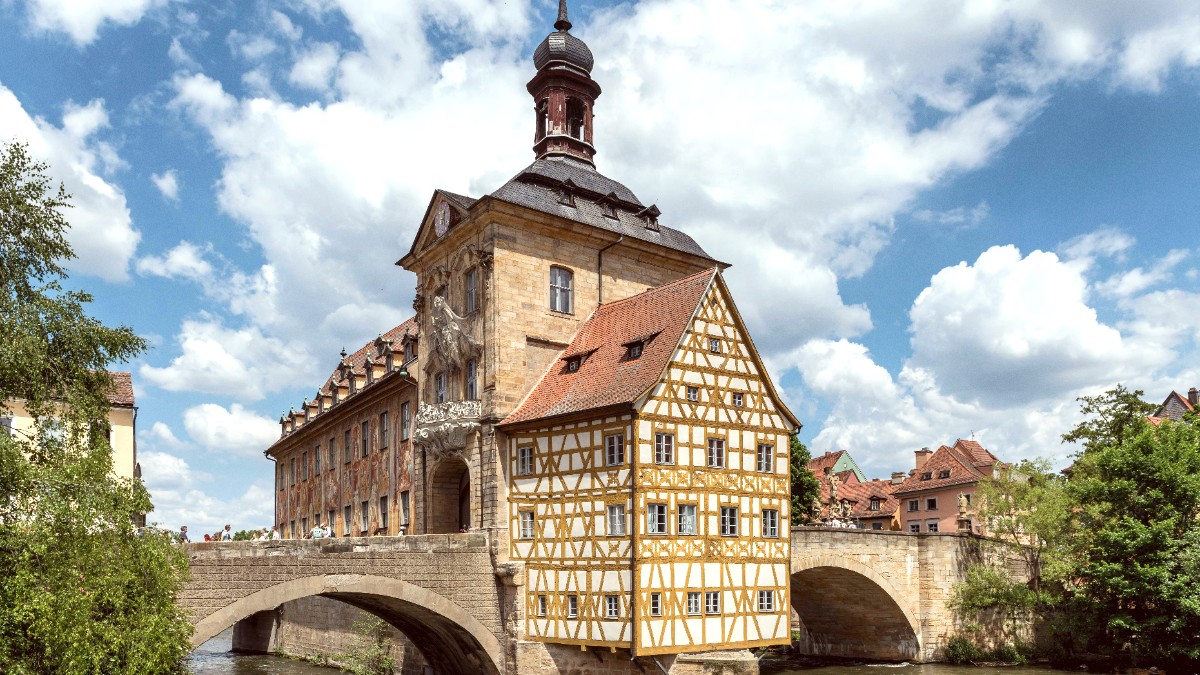
Bavaria, Germany
Bamberg is part of the VGN (Verkehrsverbund Großraum Nürnberg), the Nuremberg Metropolitan Region Transport Association. This integrated system means that a single ticket often covers travel within Bamberg and to nearby towns within the same fare zone.
Within Bamberg itself, the main mode of public transport is the bus system. There is no metro (U-Bahn) or tram network within the city limits of Bamberg, unlike larger German cities. The bus network is comprehensive, reaching all main districts and attractions. Buses generally operate from early morning (around 5:00 AM) until late evening (around midnight or even later on weekends).
The central hub for most bus lines is Bamberg Hauptbahnhof and the adjacent ZOB. The VGN provides detailed route maps and schedules online via their website (Vgn.de/en/) and mobile application.
Newer buses are typically low-floor and equipped with ramps. Bamberg's historic center with cobblestones and hills may pose challenges for mobility. Use the "VGN Fahrplan & Ticket" app for real-time info and digital tickets.
Bamberg's Old Town is compact and largely pedestrianized. Walking is often the most efficient and enjoyable way to explore core attractions. Save bus travel for longer distances or when tired.
Licensed taxis are cream-colored and display a yellow "Taxi" sign.
Hail on street if light is on, or find at designated stands (Hauptbahnhof, central squares).
Fares are metered, with a starting fare around €3.50-€4.50, plus per-kilometer charge.
Cash is accepted; many accept credit/debit cards, confirm with driver.
Taxis offer convenient door-to-door transportation. Traditional ride-sharing services have a limited presence.
Drive on the right side of the road. Seatbelts are mandatory for all occupants. Children under 12 or 150 cm must use appropriate child seats.
Adhere to all posted speed limits, typically 50 km/h in urban areas and 100 km/h on rural roads. Observe all traffic signs carefully.
Roads throughout Bamberg and the surrounding region are generally in excellent condition and well-maintained.
Walking and cycling are excellent ways to explore Bamberg's charm and beauty, notably its historic core and scenic river paths.
Bamberg features a growing network of dedicated bicycle paths, especially along the Regnitz and Main rivers.
Cycling is a popular way to explore beyond the city center.
Cyclists generally share roads with cars on smaller streets or have designated lanes on larger roads.
Helmets are recommended for safety, though not legally required for adults.
There are no specific "no-go" areas in Bamberg considered unsafe for pedestrians or cyclists.
Exercise standard urban caution in crowded areas, especially during festivals, to avoid pickpocketing.
For travelers with mobility challenges, consider taking a taxi to the top of Michaelsberg or Altenburg Castle for the views, then exploring the flatter areas of the Old Town.
Utilize the VGN app for real-time public transport information to navigate the city effectively.